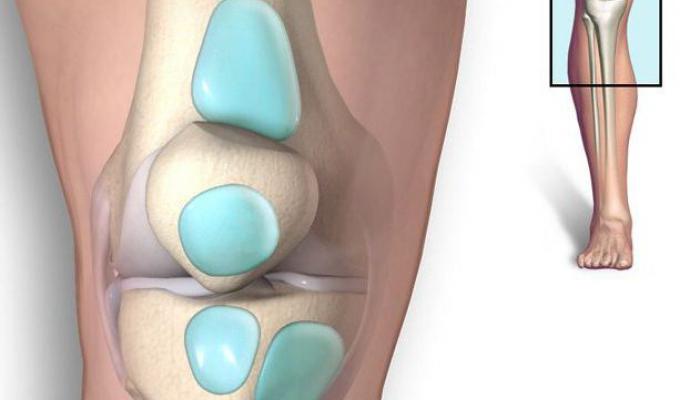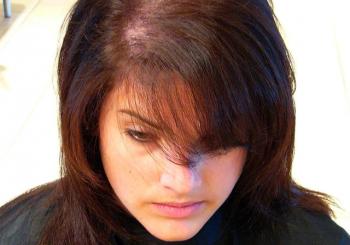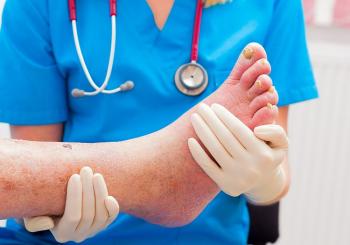
Overview
Bunions are painful swellings that usually develop on the inner side of the foot near the base of the first toe (hallux). Bunions result from abnormal bone formation in the first metatarsalphalangeal joint and misalignment of the first toe. Bunions can be related to inflammation or to degenerative disease (e.g., osteoarthritis). They cause redness, tenderness, and pain, and alter the normal position of the first toe. "Hallux abducto valgus" (HAV) is a term that refers to the hallux going away (abducting) from the midline of the body and twisting so the inside edge touches the ground and the outside edge turns upward. Essentially, this term describes the deviation of the toe toward the outside of the foot. Bunions worsen over time and cause discomfort, difficulty walking, and skin problems such as corns and lesions. Sometimes, a small fluid-filled sac (bursa) near the joint becomes inflamed (called bursitis), causing additional swelling, redness, and pain. Less frequently, bunions occur at the base of the fifth toe. When this occurs, it is called a "tailor's bunion."
Causes
Bunions are one of the most common foot problems. They often run in families, which suggests that the inherited shape of the foot may predispose people to them.
Pronated (flat) feet are unstable and often cause bunions. Body weight is repeatedly transferred to the hallux while walking, and in flat feet, this transfer of weight allows certain muscles to become stronger than others. This overpowering of muscles causes the toe to bend and deform.
Bunions may be caused by tight, pointy-toed, or high-heeled shoes, and shoes that are too small. Women get bunions much more often than men. Improper shoes exacerbate the underlying cause of flat, unstable feet.
Progression
Typically, bunions begin as a bump or outward bend of the big toe that is only a cosmetic concern. However, the misaligned, outward-bending toe stretches the ligaments that connect the foot bones and pulls against the tendons, gradually drawing the toe farther out of line. Over time, the big toe continues to twist until it no longer lines up properly with its corresponding metatarsal and the end of the metatarsal may become enlarged. Pressure from the first toe can result in deformity of the metatarsalphalangeal joint in the second toe, pushing it toward the third toe. In some cases, the second toe may ride over or under the big toe. At this point, the range of motion in the big toe is decreased, which is a condition, called hallux limitus. The condition becomes painful at this stage. The bunion changes the shape of the foot and the biomechanics of walking become altered. Normally, the big toe can bend at least 65 degrees, enabling it to be the last part of the foot to leave the ground during walking. However, with hallux limitus, the big toe cannot function properly and the body weight is transferred to the bunion. Painful bunions cause the patient to compensate by walking in an exaggerated toe-turned-out manner, so the painful hallux does not have to bend as far. Walking with the feet turned out steadily forces the hallux even farther out, worsening the condition. Without treatment, the deformity eventually becomes disabling.
Treatment
Treatment for bunions includes a thorough evaluation by a podiatrist. The only way to eliminate bunions is by surgical removal. Treatment usually involves applying ice to the feet for approximately 15 minutes, 3 or 4 times a day to reduce pain and swelling. Soaking the feet in a solution of vinegar and warm water (1 cup vinegar per gallon of water) and taking nonsteroidal anti-inflammatory drugs (NSAIDs) such as ibuprofen can also help. Due to potentially severe gastrointestinal and cardiovascular side effects, NSAIDs should only be used as instructed. Comfortably fitting shoes are the next step. High-heeled and narrow-toed shoes should be discarded in favor of sandals or wider shoes and lower, padded heels. Padding inside the shoe is another option, particularly if the bunion is small. Different types of pads and toe spacers are available to prevent the big toe from angling outward and relieve pressure against the bunion while wearing shoes. Most patients can benefit from a custom-molded orthotic, which keeps the feet properly aligned and stable, helping to prevent progression of the condition.
Surgery
Bunions worsen over time unless the problem that produces them is eliminated. If a bunion causes severe discomfort, a surgical procedure called a bunionectomy may be performed. Surgical techniques vary, depending on the angle of the bones in the bunion and the extent of the deformity. The simplest procedure involves shaving the bump and repairing the soft tissue in the big toe joint. Bunions that cause severe discomfort usually require more correction than this procedure provides. In these cases, the most common technique involves surgically fracturing and realigning the bones of the big toe. In another procedure, a wedge-shaped piece of bone from the metatarsal is removed, decreasing the toe's angle of deviation. In both procedures, the bones are repositioned and stabilized with pins, screws, plates, or wires. Extremely loose or tight ligaments and tendons may also need to be adjusted surgically. This surgery is relatively simple, and the bones and soft tissues take 6 to 8 weeks to heal. Crutches, a walking cast, or a wheelchair may be used to keep weight off the foot during recovery. Severe bunions on both feet require undergoing bunionectomy and recovery twice, or having both feet repaired at the same time, which results in 6 to 8 weeks of immobility. Most patients choose the former because it offers them a degree of mobility and selfsufficiency. After surgery and recovery, the patient is fitted with orthotics to maintain stable, properly aligned feet. Without this treatment, the underlying cause of the bunion continues to cause problems and the bunion can recur.
You can make an appointment with the experienced podiatrist for advice on this topic Michalis Polyviou | MedHelp24




